As we have discussed in earlier post, gota patti borders are native of Indian state of Rajasthan and can be further divided into different types based on their designs and use. Gota patti or gota ribbons are also use in Lappe ka kaam - also know as Indian applique embroidery in wider terms. Clothes embroidered with Lappe ka kaam are very exquisite, unique and made with lot of hard work and passion. The master-Karigars in India take great pride in being the experts of this beautiful art and believe me it takes years of practice to master this art.
Traditional articles made using Lappe ka karma include turbans, lehenga and wedding sprees, tops, skirts, kurtis, dupattas, cushion covers, decorative panels and what not! Colors that are used in this work are mostly hot pink, emerald green, red, bright orange, gold and silk, and electric blue. However, designers have started using rather offbeat colors such as earthy and pastel shades with metallic touch.
According to Design Source - An IIT Bombay initiative, the process of Lappe ka kaam involves three steps mainly.
a). Chhapayi - in hindi, Chhapayi means transferring the pattern on to fabric. This process is more or less similar to the image transfer process in hand or machine embroidery or textile printing procedure. Washable chalk, carbon paper or indigo is used to make the pattern over the fabric. If fabric is being prepared for clothe making, demarcation for margins and seam is done in advance without cutting the fabric. The fabrics that are used for this expensive embroidery are mostly Tasar silk, chiffons or Bandhej silks. Before transferring the pattern over the fabric, the piece of cloth is tightly tied to a two sides wooden frame (khat in hindi), this process is called framing the cloth. It becomes much easier to transfer the pattern on a framed piece of cloth.
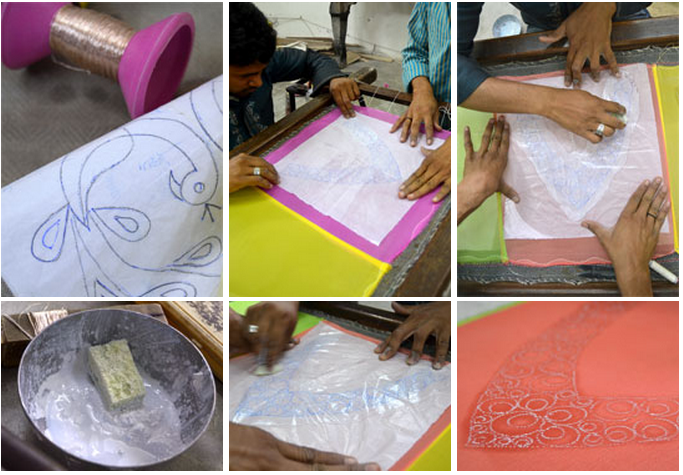
Gota ribbon or lace is bulk produced by machines in factories. Plain gota is mostly Silver, Gold or Copper in color.

This gota ribbon is folded and cut in shape of required pattern before gluing it at the decided place (over the transferred pattern). Once the gota shapes are properly set over the tightened fabric piece, it is ready for Takaayi.

b). Takaayi - in hindi Takaayi means tucking or stitching. This stage involves tucking or stitching the cut gota pieces on the fabric piece. This work is done using very specific kind of needles, made for Lappe ka kaam. From very easy to very critical patterns such as paisley, flowers, peacock, elephants and other animals are formed using these cut shapes of gota.
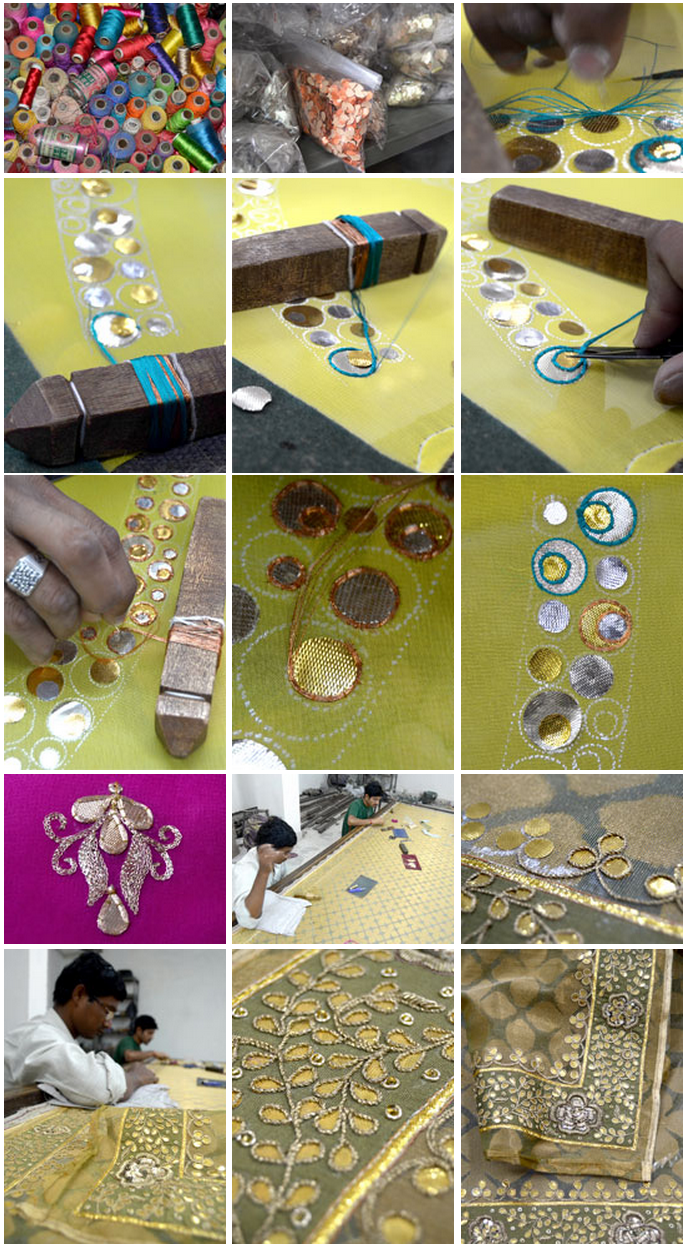
c). Silaayi - Silaayi or stitching is done using two-three main embroidery stitches such as -- chain and blanket stitch. Blanket stitch is used around mirrors or round shapes mostly. One or more wooden pieces are used to roll the Jari (metallic thread) and silk threads in order to avoid them from entangling.

Image credit: D'source | DesiCrafts | Pinterest Board
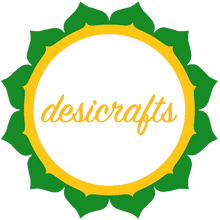
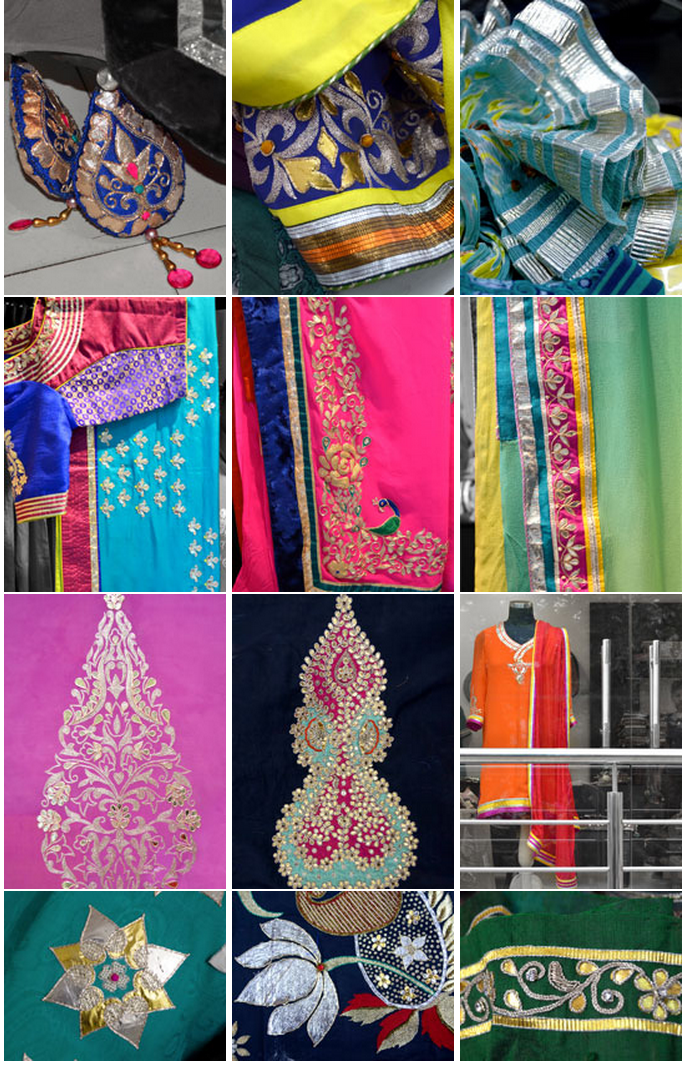
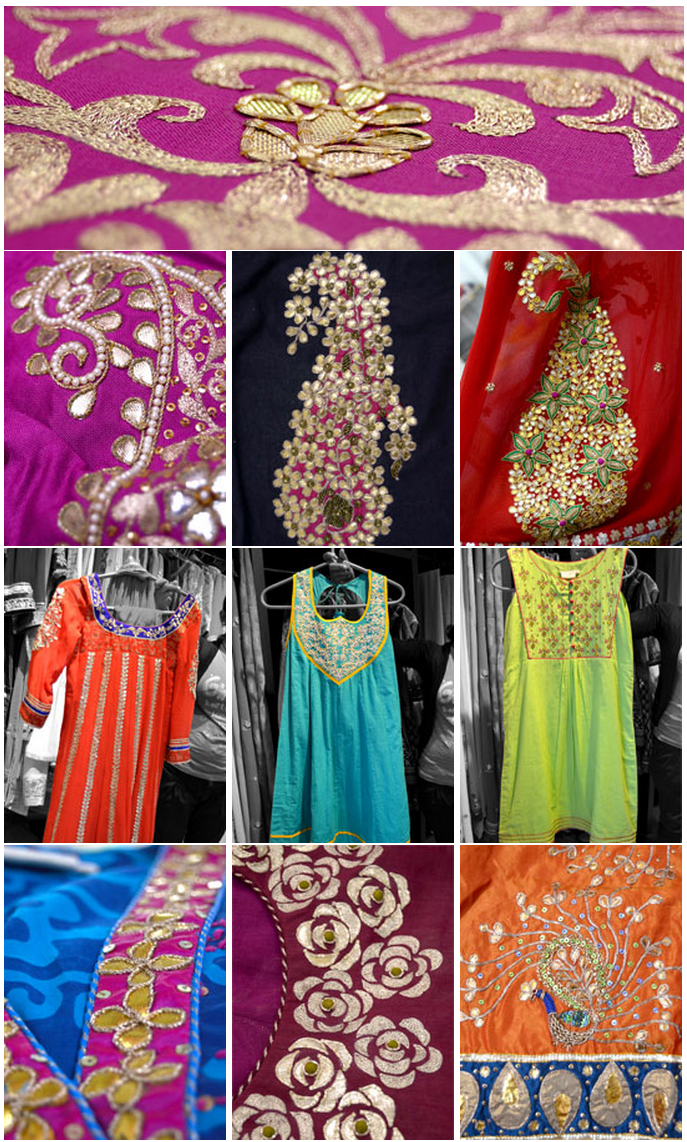
Comments
Good job
I really loved it
It’s amazing
Very informative. Where can I get these done for my boutique stock. Please let me know, I am ready to place an order.
Lace sempling plz send
Hi! I tried cutting the gota lace in different shapes but thread comes out leaving it shapeless…How do I cut without the thread coming out
hello,
i want to know about the organisation working on lappe ka kaam ( gota kaam) in Jaipir .
Very nice
Nice
A beautifully detailed post outing the intricacies of this amazing work. So much of the work done in India is very fine craft work.
hey there, nice blog post on lape ka kaam. I own a craft supply shop in WA, USA. I would love to buy some of your gota ribbons for my shop.